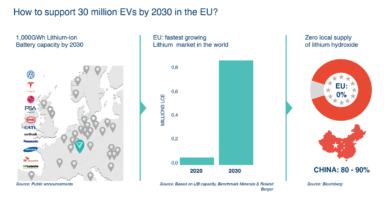
How Sustainable Finance Will Support the Climate Transition
Today, we are living through a remarkable period of history. The global cash flows are being gradually channelled in a sustainable direction, and green finance is trending in financial markets. In 2020, sustainable funds attracted a total of $51,1 billion in net flows, which was more than twice the previous record set in 2019. Moreover, the EU launched its very first Sustainable Finance Action Plan in March 2018, during the past years China has committed to carbon neutrality by 2060, and the US has re-joined the Paris Agreement under the Biden administration. The direction is right, but there is still a long way to go.
According to estimates, the climate crisis will cost us $1 quadrillion over the next 80 years if we fail to meet the terms of the Paris Climate Agreement. Moreover, it makes the yearly sum even more than twice per year of what the COVID-19 crisis is hitting us with now.
If we aim to tackle this challenge and want to prepare our political institutions, companies, financial actors, retail investors and industries to cope with global warming, the bar needs to be set high enough to provide ambitious and effective legislation.
This requires even more intertwined environmental and financial legislation, and to make it genuinely impactful, the bar needs to be set high enough by using the adequate targets defined by science and impartial researchers.
Heretofore, the EU Taxonomy Regulation is the very first EU financial regulation that sets science-based green finance rules. By re-channelling cash flows from unsustainable to sustainable targets, it aims to halt climate change, conserve biodiversity, foster a circular economy, prevent pollution, and protect biodiversity. For the first time, it introduces very essential concepts of green finance in the EU legislation; the life-cycle analysis, the ‘do no significant harm’ (DNSH) principle and sustainability indicators. The EU Taxonomy is, therefore, the corner store of sustainable finance that complements the EU environmental initiatives, such as the Green Deal and the newly published Fit for 55 package, and additionally, a revolutionary step towards correcting the way financial sector and the real economy price in, or rather do not price in, negative environmental externalities.
In order to reach climate neutrality by 2050, many fixes still need to be done in order to correct the current financial markets. Firstly, sustainability accounting needs to be incorporated in all relevant public and private reporting, and to become globally aligned with the same harmonized methodology.
It should be included into consideration of national budgets and European Semester, as well as of banks, credit rating agencies, prudential risk management in solvency concepts, et cetera. Secondly, the concept of sustainability does not only limit to environmental issues, as the whole ESG values (environment, social, governance) needs to be integrated into a company’s activities. A top-down approach is needed, and both environmental and social due diligence should be included in the list of responses of corporate management and board, for securing adequate levels of meticulousness and responsibility of the business.
Finally, the examination and implementation of different risk concepts should be in the core of any EU sustainable finance initiatives. Last year, the risk of a global pandemic became reality in the modern world and caused an unprecedented shock to our economies and societies, and even more catastrophic global risk of climate change is looming in the shadows. The future risks are manifold and sometimes even difficult to predict, but I prefer using the concept of ‘triple materiality’ that introduces the most accurate definitions of different types of risks in financial markets.
Finally, the examination and implementation of different risk concepts should be in the core of any EU sustainable finance initiatives.
Last year, the risk of a global pandemic became reality in the modern world and caused an unprecedented shock to our economies and societies. The future risks are manifold and even difficult to predict, but I prefer using the concept of ‘triple materiality’ that gives the most accurate definitions of different types of risks.
The first level of triple materiality is financial and technical risks that might have potential impacts on the credit or liquidity of the company. Secondly, there exists the level of environmental risks including the operational risks, such as potential accidents, and new hazards emerging from climate and environmental changes that have a direct impact on the business. Lastly, the third and most invisible, though the most important level is the biodiversity risk. It means that if you are increasing and intensifying climate change, biodiversity loss and resource overconsumption yourself, you are both gradually destroying your own business environment and the planet. However, if you are supporting the transition towards climate neutrality, you will also create a sound and successful business environment for yourself.
As a summary, first we need to create a science-based, transparent and harmonized global system for comparable data. Secondly, with this data the sustainability risks need to be assessed thoroughly in system risk analyses, also by credit rating agencies. These assessments, as well as the whole materiality concept should be reflected in banking sector and lending decisions, and capital risk buffers. Thirdly, we need to establish a global sustainable finance framework in both public and private sectors with adequate flexibility, and try to safeguard this framework from political manoeuvring and manipulation. Sustainable finance is the key to tackle climate change and preserve biodiversity, and we have no time to waste.




